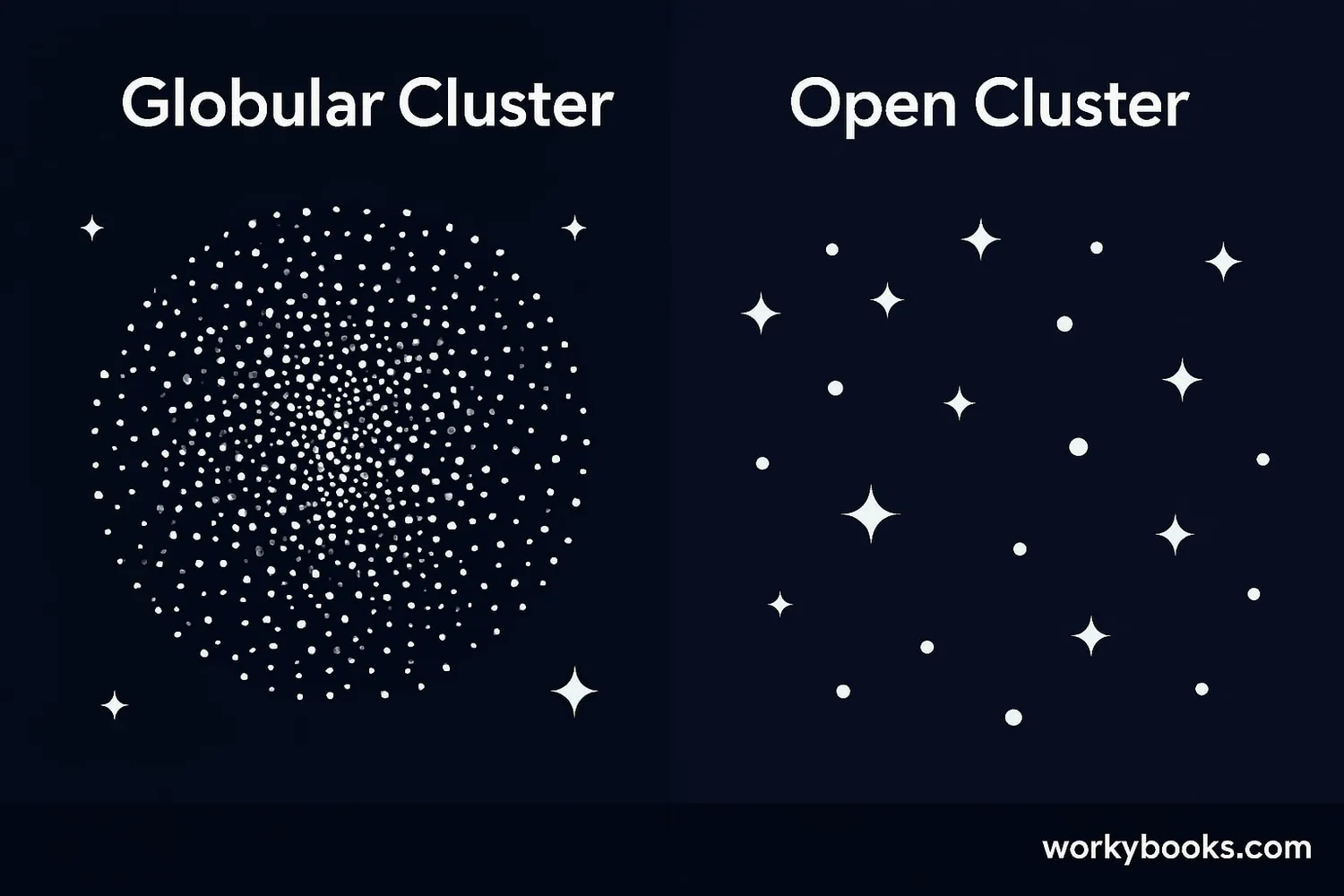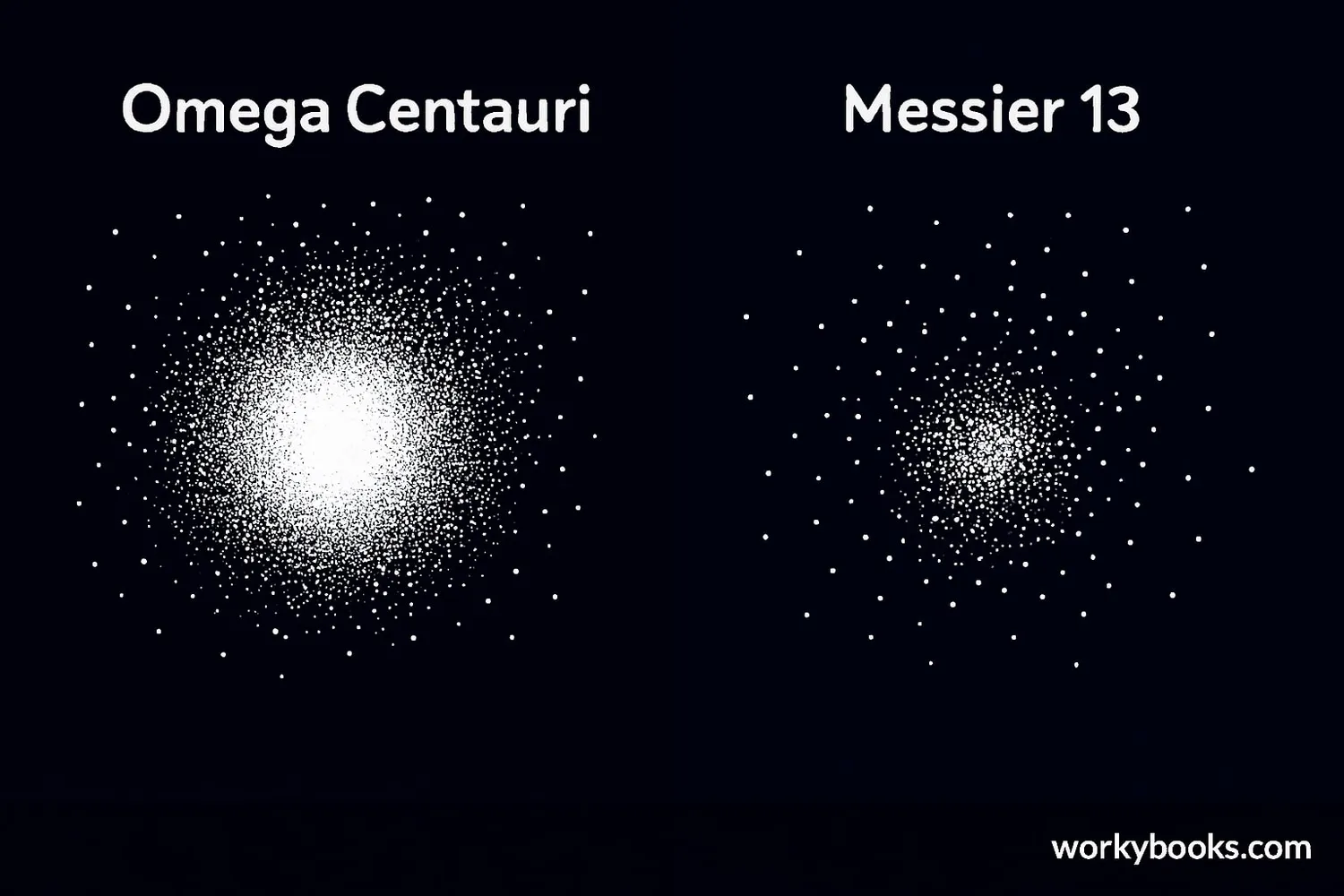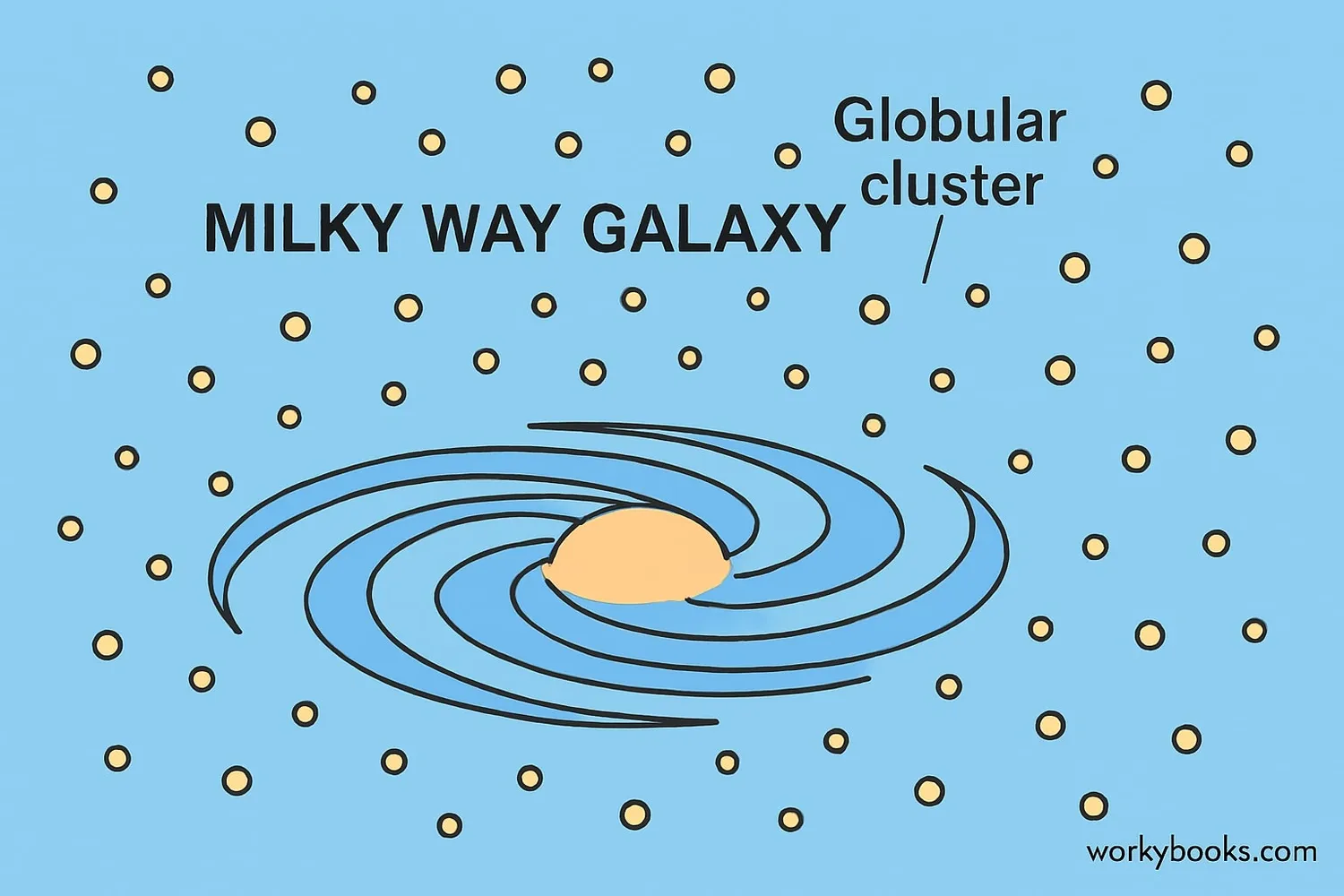Globular Clusters - Definition, Examples, Quiz, FAQ, Trivia
Discover the ancient star cities of our galaxy!
What Are Globular Clusters?

Globular clusters are like ancient cities of stars! They are huge, spherical collections of hundreds of thousands of stars held together by gravity. Imagine a gigantic, glittering ball of stars floating in space!
These amazing star clusters are some of the oldest objects in our universe. Most globular clusters formed about 10-13 billion years ago, which means they were born when our galaxy, the Milky Way, was very young. They contain some of the first stars ever created!
Did You Know?
The Milky Way galaxy has about 150 known globular clusters orbiting around it like glowing satellites!
Shape
Spherical or ball-shaped
Size
100-300 light-years across
Stars
100,000 to 1 million stars
Age
10-13 billion years old
Location
In the galactic halo around galaxies
Types of Star Clusters

Not all star clusters are the same! Astronomers recognize two main types of star clusters:
Globular Clusters
Open Clusters
Famous Globular Clusters

Some globular clusters are so bright and impressive that they've been studied for centuries. Here are two of the most famous:
Omega Centauri
The largest globular cluster in the Milky Way
Contains about 10 million stars!
Messier 13
The "Great Hercules Cluster"
Visible with binoculars in the Northern Hemisphere
Observation Tip
Look for globular clusters in the summer sky! The best time to view them from the Northern Hemisphere is May through September.
The Science Behind Globular Clusters

Why are globular clusters so important to astronomers? They're like cosmic time capsules that help us understand the history of our universe!
Ancient History
Contain some of the oldest known stars in the universe
Stellar Evolution
Show stars at different stages of their life cycles
Galaxy Formation
Help us understand how galaxies form and evolve
Cosmic Puzzle
Some globular clusters contain mysterious "blue stragglers" - stars that appear younger than the cluster itself! Astronomers are still studying how they formed.
Globular Clusters Quiz
Test your knowledge about globular clusters with this interactive quiz!
Frequently Asked Questions
Here are answers to common questions about globular clusters:
Space Trivia
Discover amazing facts about globular clusters:
Cosmic Distances
The closest globular cluster to Earth is M4 in the constellation Scorpius, about 7,200 light-years away. The farthest Milky Way globular clusters are over 400,000 light-years away!
Speedy Travelers
Globular clusters orbit the center of our galaxy at incredible speeds. Some move as fast as 200 kilometers per second (about 450,000 miles per hour)!
Crowded Neighborhood
Near the center of a globular cluster, stars are packed so tightly that if you lived on a planet there, you'd see thousands of stars brighter than Venus appears from Earth!
Cosmic Giants
The largest globular cluster in the Milky Way, Omega Centauri, is so big that it's thought to be the remnant core of a dwarf galaxy that our Milky Way absorbed long ago!


